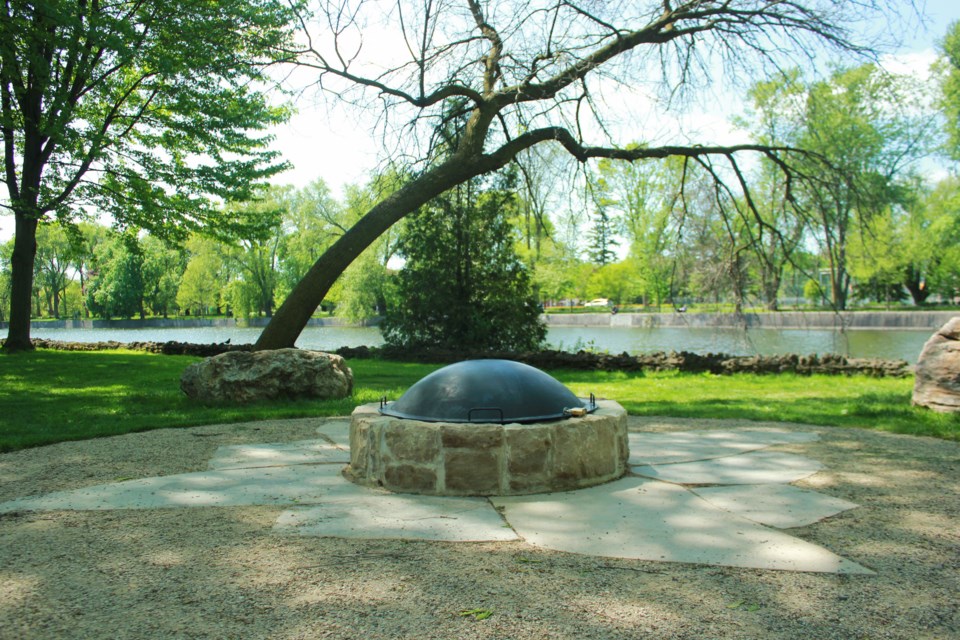As society makes changes towards the Truth and Reconciliation Commission’s Calls to Action, professor Sheri Longboat at the University of Guelph says we have a long way to go in terms of relationships with Indigenous people.
Recently, the City of Guelph installed a Sacred Fire Space in the Royal City Park that will be inaugurated on National Indigenous Peoples Day on June 21.
“It's a wonderful initiative both symbolically and understandably if it was done with a collaborative nature between the municipalities and the Indigenous peoples within the area. That as well is quite significant,” says Longboat, a Haudenosaunee Mohawk and band member of the Six Nations of the Grand River with 20 years of experience working with Indigenous communities across Canada.
Longboat says marking this day is important so people of Turtle Island can collectively bring their minds together to recognize and honour the relationships with the First Nations Peoples and recognize their contributions.
“It is a step towards the direction we need to be going. But again, it is a starting point. It is a space. We need to recognize these Indigenous lands and historical relationships beyond the sacred place,” says Longboat.
Longboat says that while we are aligned in the direction of reconciliation as a nation, some will argue that we need to focus more on the truth.
With her unique perspective in the research of the relationship between Indigenous and Western knowledge systems, policy and governance to promote water security, food and sustainability in First Nation communities, Longboat says we need to begin to understand how we can collaborate or co-govern our lands and resources in some capacity.
“First Nation communities under the current state are very rarely recognized as legitimate governments to be acting on, or sharing in decision-making,” says Longboat
An example she gives is the limited engagement of First Nation communities within the Grand River Watershed.
“Those of historic treaties- when they were signed, they were to share and take care of the land and waters forever. And water governance, for example, falls within the federal and provincial government of Canada and our constitution, and very rarely are First Nations people involved in that decision making or they are involved to a very limited extent,” says Longboat.
“That is a prime example. First Nations people weren't even involved in that process at all.”
Longboat says she's more optimistic now than ever before, but believes there’s a lot more work to be done.
She says each sector needs to look internally and see how they might respond to the calls of action.
The TRC report outlines specific calls to action to different sectors.
In a school setting, she says it would be understanding what the true history of Canada is.
“When I was in school, we learned a different history. We learned it started when the settlers came and discovered North America and then colonized it. But it’s a rich history if you study the archeological history, the lands, the knowledge of the Indigenous peoples. It’s bringing the truth to a truthful history and positioning the Indigenous people as strong. There were strong social, economic, political, cultural trade routes well before settlers arrived," says Longboat.
“It’s teaching that people lived here before and they were strong, vibrant people and there were relationships before and we need to return to what those original relationships were.”
While the recognition of land at places and events is positive, Longboat says it needs more action to go with it.
“Some would say that recognition is just saying this was yours and now we're here. We recognize it was yours but it's just a statement, we really need action to go with it. It is kind of like someone moved into my house and kicked me out and says, ‘Hey I recognize this is your house, I'm here now',” says Longboat.
“That's why some people say it's 'reconcil-action'. What are the actions beyond those statements, beyond recognizing this is Indigenous land?”
Longboat says it is also important to recognize the historical obligation and relationships with the First Nations and to peacefully co-exist where Indigenous people are part of the decision making that impacts their lives.
While society still needs to make changes towards truth and reconciliation with the Indigenous peoples, Longboat says she definitely sees a change.
“We're getting there. Even with the university bringing Indigenous scholars to the institution, I see a positive. I've been doing this for over 20 years, I see it change,” says Longboat.
“It's an upward momentum and that affects the youth in the community. We're seeing a resurgence of Indigenous cultures and languages and vibrancy in the youth and that's really positive.”
